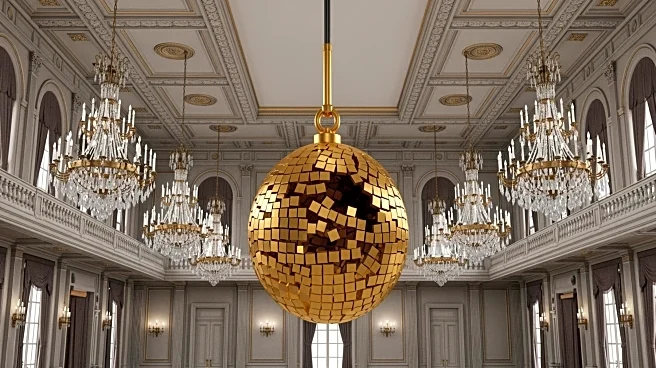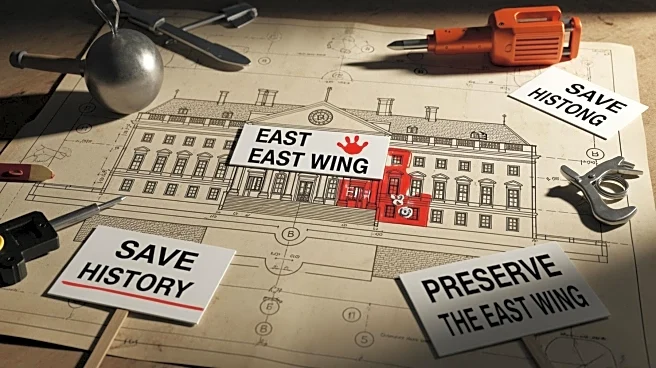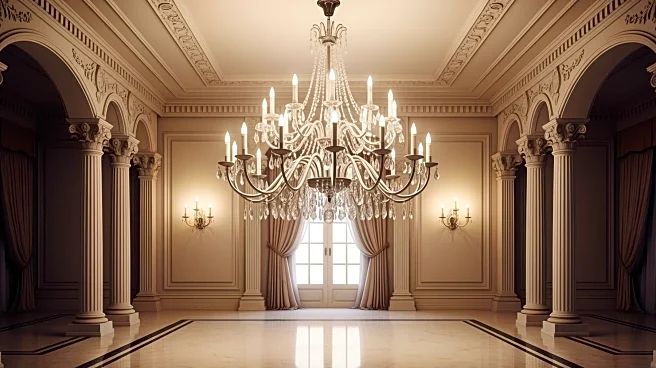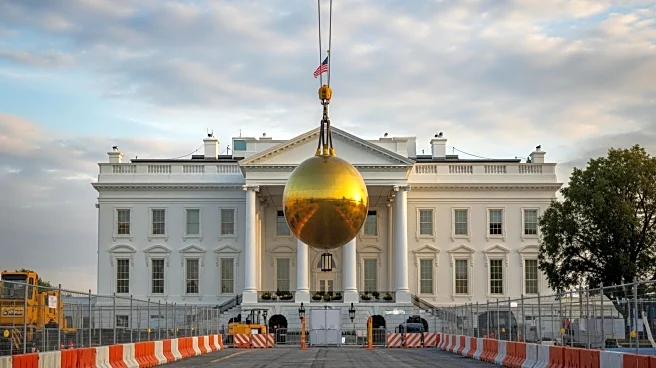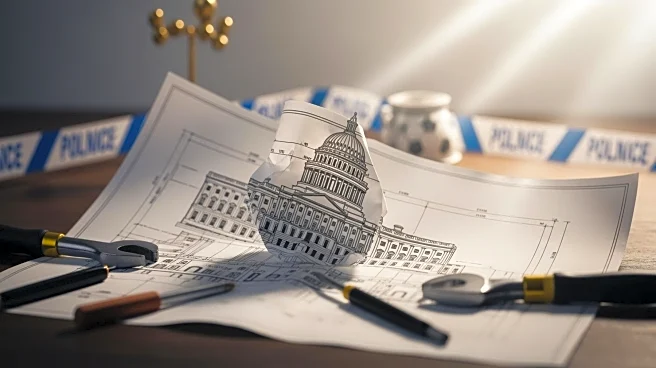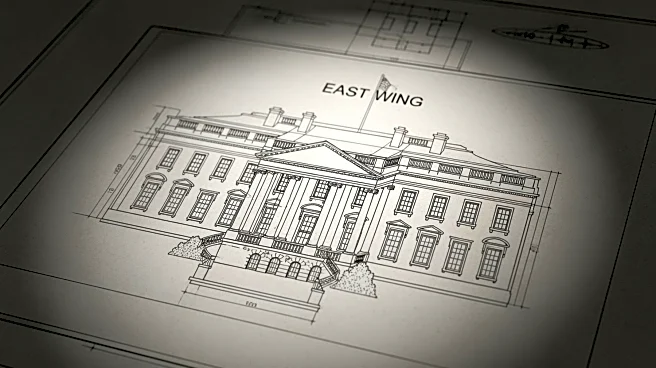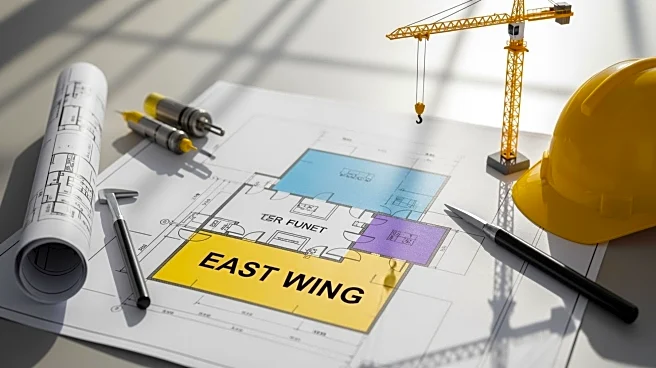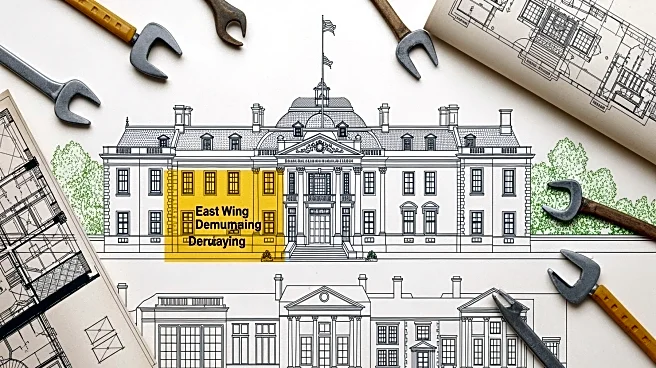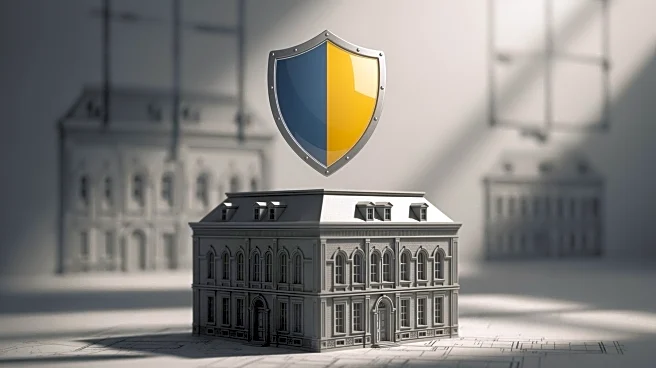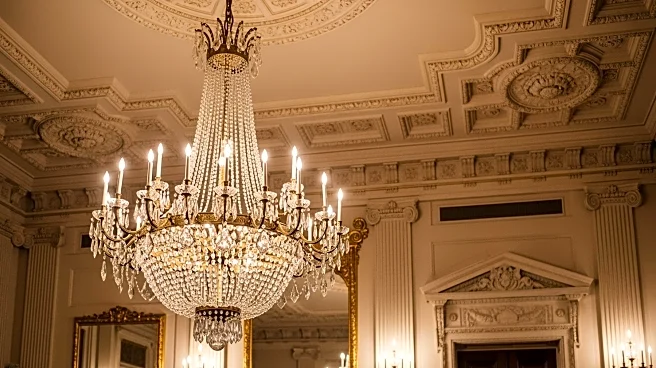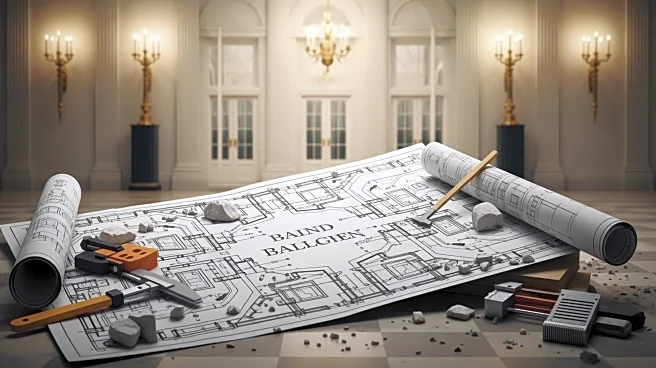What's Happening?
President Trump has announced an increase in the estimated cost of constructing a new ballroom at the White House, raising it to $300 million. This development comes as he defends the decision to demolish
the East Wing, a move that has sparked controversy. The project is part of a broader effort by President Trump to make significant changes to the White House, a practice not uncommon among U.S. presidents. However, the scale and nature of this particular renovation have drawn attention due to its substantial financial implications and the historical significance of the East Wing.
Why It's Important?
The decision to demolish the East Wing and construct a new ballroom at such a high cost has significant implications for public spending and historical preservation. The East Wing is an integral part of the White House, housing offices and serving as a symbol of American political history. The renovation project raises questions about the prioritization of resources and the impact on taxpayer funds. Additionally, it highlights the ongoing debate over the balance between modernization and the preservation of historical landmarks. Stakeholders, including historians and political analysts, are likely to scrutinize the decision, considering its potential effects on public perception and government accountability.
What's Next?
As the renovation project progresses, it is expected that there will be further discussions and possibly opposition from various stakeholders, including political leaders, historians, and the public. The increased cost may lead to calls for transparency and justification of the expenditure. Additionally, the project could face logistical challenges and delays, given the complexity of construction within a historically significant site. The administration may need to address concerns regarding the preservation of historical elements and ensure that the renovation aligns with broader governmental priorities.
Beyond the Headlines
The renovation of the White House, particularly the demolition of the East Wing, touches on deeper issues of historical preservation versus modernization. It raises ethical questions about the stewardship of national heritage sites and the responsibilities of political leaders in maintaining these landmarks. The project may also influence future administrations' approaches to White House renovations, setting precedents for how historical and functional needs are balanced. Furthermore, it could spark broader discussions about the role of government in preserving cultural heritage amid evolving political and social landscapes.
